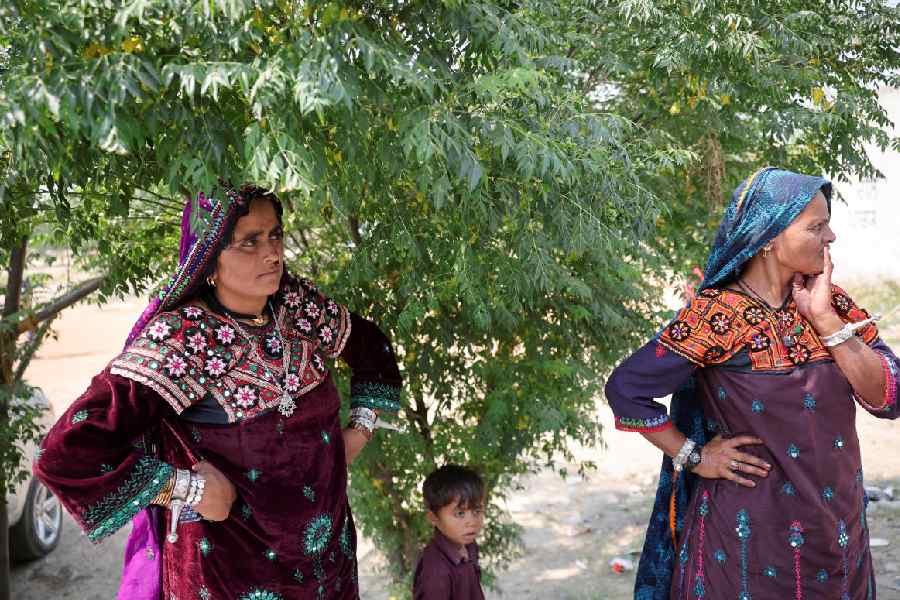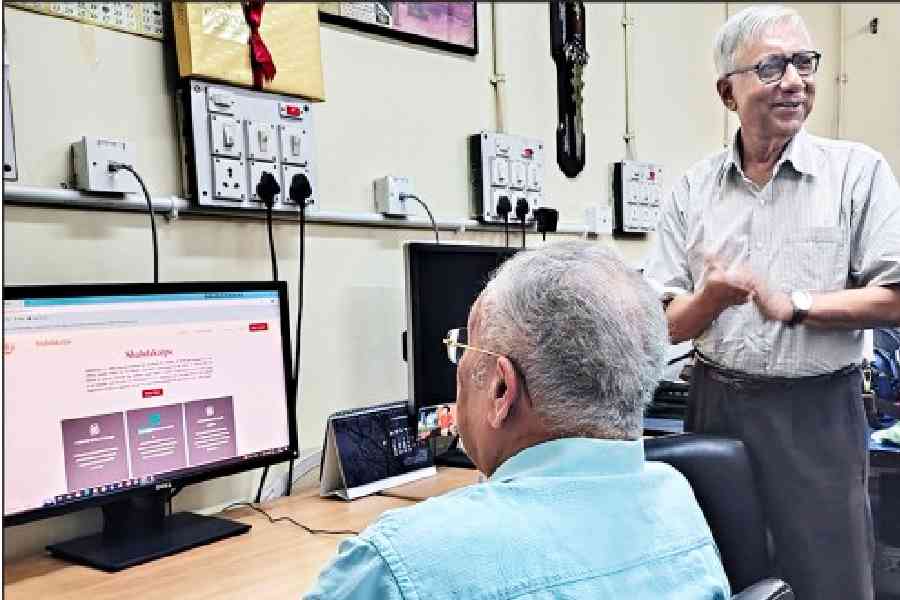 |
There are hoardings all over town from a leading bank that asserts that with India on Fast Forward, Calcutta and you should follow suit. As an economic proposition, you can ignore the sign only at the peril of your future growth and survival. As a cultural proposition, I am not entirely sure whether the Fast Forward without an occasional Rewind, will leave us richer. What are we without our history? What is our identity without our past?
Calcutta and Calcuttans have traditionally been accused of living in the past, and I, at least, have no hesitation in accepting the blame. But then that was a past where we had no future. Today, with new mushrooming malls, flashy flyovers, and comfy condovilles our city has suddenly woken up to its future with a start. Yes, we do have our future now, if not firmly ensconced in time present, at least certainly discernible in the immediate future. That is why perhaps it is necessary to go down memory lane once in a while, to remind ourselves of our past and take the necessary credit for it.
Americans, always the most forward looking of people, in fact had so little of a past that they had to import some of it lock, stock and barrel from the European mainland. We have heard of how many eccentric American millionaires bought entire villas and castles from beyond the Atlantic and shipped it across only to re-instate them in the New World. When you don?t have heritage you have to buy it!
Fortunately for us in Calcutta, it is still there. But we need to preserve it; we need to appreciate its value beyond the purchase of fake antique furniture. Look for it around you, and you will find heritage in the most unusual and unexpected places, right beside you while you are moving pell-mell along the Fast Track. Coming in from town or Kidderpore along the Diamond Harbour Road, you might miss the Burdwan Rajbari, dwarfed by huge highrises, on the stretch between Mominpore and the Majherhat Bridge. Stop for a while, ask the elderly in the neighbourhood, and there may still be a kindly old Muslim gent who will point out the rusty gate that will lead you into a treasure-trove of your city?s own history.
The Rajas of Burdwan are not even authentic Bengalis. Like some other zamindars of their ilk, like the Azimganj family in northern Bengal, their forefathers came from elsewhere, and made fortunes either as traders or as mercenaries. Many of their original zamindaris were given to them by the Bengal Sultanate, only to be ratified later by Lord Cornwallis and his Permanent Settlement.
The Burdwan Mahatabs came from the Punjab, probably Rajputs, yet through time, they have become part of the history of Bengal. Their contribution to the district that today holds the world record for paddy yield has also been extensive in the field of education and culture. As you walk into the decrepit Rajbari on Diamond Harbour Road, where the overgrown weeds and derelict structures are a staggering reminder of what it must have looked like as a breathtaking ornamental Victorian garden, let me remind you that was only their town house. They had bequeathed their original palace in Burdwan Town to the nation, to house Burdwan University, one of the earliest new universities that came into being after Independence. Its firm foundations had been laid by them in their Burdwan Raj College decades earlier.
It would be easy to label the architecture of the Burdwan Rajbari as Colonial Victorian and be done with it. However, heritage is sometimes complex enough to disallow blanket generalisations. It is structurally colonial, and pre-eminently Victorian but there are other significant touches that cannot escape the discerning eye, and the balance with which diverse architectural styles have been blended is symbolic of the manner in which architecture in India has emerged through centuries. You will find startling contiguity between the usual round arch that signifies Victorian architecture; you will find the wide verandahs that identify the colonial style, and right beside it will appear the sudden, decorative and pleasing presence of the Saracenic arch. This probably came in through Muslim invasions which brought it in its wake the gifted Persian artisans and masons of Ispahan in what in what is now Iran. And somehow in the soil of the Indian subcontinent, skills that have arrived here have almost always taken firm roots. It has been passed from one generation of masons to another, from the great Persian architects and technicians to our own very skilled ones. And of course, all these have blended magnificently with indigenous Hindu architectural skills and styles. What you see is more Indian than it is Ispahani.
You may not be able to penetrate into the deep interiors of the house, nor meet its reclusive denizens, but you must use your powers of persuasion to be let into the drawing rooms and feast yourself on the wealth of breathtaking period furniture. Do not be surprised to find an original Louis Quinze chair lying in a dark and dusty corner. The Mahatabs as family have not only had history but they have also had a fine understanding of it as well. The last scion of the family Pranay Chand Mahatab wrote a doctoral dissertation on the Zamindars of Bengal at the University of London. He was secretary of the Indian Historical Society and has been a prime mover in this part of the world for INTACH, the most concerned and active organisation committed towards the preservation of our heritage.
You may dismiss all this as nostalgia, but how can we ignore our past? Even if you see it in very modern and practical terms, the past is valuable. In a market where Sotheby?s and Christie?s have arrived, the value of genuine antiques is not only being recognised but is even being celebrated with great gusto. There is big money to be made in old things, if you are money-minded. There is also big learning to be derived from them, if you are ideas-minded. Either way, the past is waiting for some attention while Calcutta speeds ahead with its newfound enthusiasm. So while you are on Fast Forward, give the past an occasional glance. Pause an indolent moment to allow yourself the luxury of the Rewind.
The Burdwan Rajbari, a relic of our glorious past, is one the many places that you may re-discover. And if nothing else, the rewards of seeing it with your own eyes offers enough in itself.










